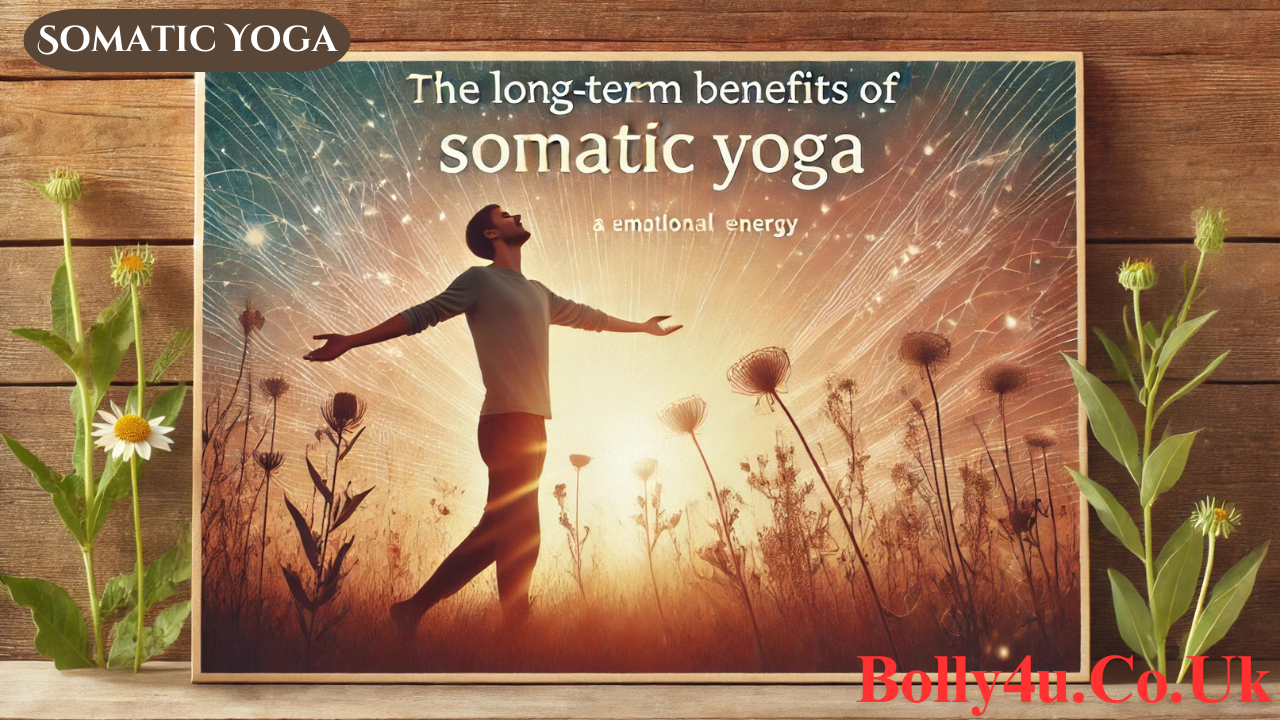Exploring the Transformative Power of Somatic Yoga: What is Somatic Yoga, Its Benefits, and How to Begin

Somatic Yoga: A Gentle Path to a Very Deep Change.
In a world that is high-speed and overloaded with inputs, more and more people are open to mindful movement to return to their bodies, to de-stress, and to bring back the inner balance. Of these practices, somatic yoga has drawn increasing attention due to its very unique, therapeutic movement approach. Unlike hatha yoga or all other yogic styles that usually emphasize postures or flexibility practices, somatic yoga is much deeper and has a nice profundity of promoting awareness from within. This article will discuss in detail what is somatic yoga, give some benefits for somatic yoga, and some guidelines on how to do somatic yoga for beginners such as somatic yoga exercises, and explain how this aspect of the practice can provide a practical addition to a healthy lifestyle in terms of weight loss.
What Is Somatic Yoga?
The term “soma,” derived from the Greek word meaning “the living body as experienced from within,” gives way to understanding somatic yoga. Somatic yoga integrates the discipline of bodywork dealing primarily with one’s internal perceptions and experiences of the well-known yogic postures and breathing practices. The somatic yoga practitioner will then begin the development of such an internal focus to recognize feeling states about how a movement is enacted, rather than focusing primarily on how the movement looks externally.

Somatic Yoga in Thomas Hanna’s teaching is his work; that is, all he left for all his posterity. His philosophy was that sensory-motor awareness has the power to reprogram our nervous system from chronic muscular tension. Somatic yoga is thus a kind of therapy you may apply to rehabilitation in the movement patterns and enhance mobility while it develops the body’s awareness overall.
Thus, the practice is a kind of slow, gentle movement, accompanied usually by awareness, practiced usually on the floor. The movement brings to light the whole brain-to-muscle connection and resets the body’s habitual tension patterns while restoring a functional alignment.
Somatic Yoga for Beginners: An Easy and Safe Option
The very fact of this accessibility attracts the more timid souls who may not feel at home in a different setting, much faster-paced or more physically demanding.
A typical session for beginners involves a few very simple movements that are a little repetitious so that the practitioner can feel intricate bodily sensations. The rhythm of these simple movements is slowed down enough, so silence, thought, and then feedback from one’s nervous system can take place. The instructors often cue participants to notice feelings of tightness, fatigue, or disconnect so that they acknowledge those sensations non-judgmentally and move gently with them.
It especially speaks to the levels of injury recovery, chronic pain, and stress. It holds a space for the retake of trust in their bodies. Being a non-competitive, nondoing approach implies that this somatic yoga allows the beginner to retain a very personal practice, which will intensively adapt to her own needs over time.
Core Somatic Yoga Exercises: Reconnection of Mind and Body
The somatic yoga exercises involve intentionally moving the body while receiving sensory feedback. In contrast to stereotypical workout routines, yoga exercises are subtle and focused; the aim is to refine neuromuscular coordination and body awareness.
- The natural movement of Contract-Release-Rela x is described as classic pandiculation: you contract the muscle, slowly let it go, and then completely relax. It resets the resting length of the muscle and teaches the brain how to diminish unnecessary tension.
- Arch and Flatten. While lying face up on the floor with the knees bent, this movement gently arches the lower back, staying in the arch for a couple of seconds, and then flattens against the ground. It helps the pelvis and spine go back into alignment.
- The Pelvic Clock: While imagining a clock face underneath the pelvis, practitioners allow their hips to gently tilt from position to position while bringing relief to the hip and low-back tension.
- Shoulder Rolls and Arm Circles: Small circles with shoulder and arm rotations to ease tensions in the upper body and mobilize the joints.
- Leg Slides and Hip Lifts. Gentle movements of the legs to engage and coordinate the hips, thighs, and lower back.
Each exercise is performed, followed by rest and integration, allowing the nervous system time to digest the advantages of that movement. Over time, practitioners report feeling lighter, freer, and more present in their bodies.
Somatic Yoga for Weight Loss: A Complete and Sustainable Approach
Somatic yoga may not appear as a direct form of exercise for weight loss, given its low intensity, yet it most efficiently renders indirect powerful ways of achieving sustainable weight management.
To begin with, with increased awareness of the body, one becomes much more in touch with hunger, satiation, and emotional dynamics of eating habits. Most people eat unconsciously through stress or emotional triggers. yoga creates a mindfulness aspect associated with healthier eating and emotional appraisal.
Also, the other physical aspect is making a space physiologically for weight loss by releasing muscle tension and putting stress hormones like cortisol into the lowering. Stress-reducing effects of somatic yoga help restore hormonal function and metabolism.
Posture, alignment, and muscular action improve, making the body more economical in its everyday movements. This, in turn, makes it easier for spontaneous physical activity to occur, giving up an overall greater calorie expenditure.
Most importantly, yoga creates renewed enthusiasm for self-care in all parameters-diet, sleep, exercise, and mental health. In terms of sustainability, this change in mindset could be one of the most long-lasting ones.
Physicality is not all there is to Somatic Yoga Benefits.
Somatic yoga has much more to offer than flexibility and strength. Here is a further discussion of such multidimensional benefits:

- The Enhanced Mind-Body Connection: Among the most profound benefits of somatic yoga includes the reliance on the perception to heighten internal awareness. Instructors can learn how to feel and correct misalignments internally; tensions of the body and dysfunctional patterns of movement outside.
- Stress Reduction and Nervous System Regulation: Being itself a form of very slow individualized movement, yoga has a self-facilitated breathwork that builds into a platform for activating that parasympathetic physiology, the body’s rest-and-digest mode, causing a slow-down of frantic activity with a resulting decrease in anxiety, better sleep, and emotional buffer against stress.
- Pain Management; Somatic yoga is gentle and highly therapeutic, making it easy for rehabilitation centers to employ it for back pain, arthritic joint problems, or repetitive strain injuries rehabilitation. It retrains the nervous system to unload habitual tension and move more efficiently.
- Posture and Balance Improvement: Gradually, therefore, one will become very aware of how to carry oneself-not just when in a still state, but while moving. This will lead to better posture and hence almost automatic reduction of strain on joints alongside improved coordination capacities.
- Clarity of Mind and Equilibrium of Emotion: As bodily tension tends to melt away, so does the fog in the mind and hyperreactivity in the emotions. Somatic yoga creates space within for clarity, focus, and creativity.
Bringing Somatic Yoga Into Your Life
Somatic yoga is a generous approach to touch for chronic pain or stress or to get acquainted with deeper aspects of the body. This is all it takes to start: you find a quiet place, then lie down and move slowly with awareness. There is no right or wrong; it is a blossoming relationship between you and your body.
For those who would like formal instruction, there are increasing numbers of yoga classes both at studios and online. A certified somatic educator and/or yoga therapist can personalize the experience to ensure it is safe and supportive for you.
Gradually, the effects multiply, not only providing some relief from physical discomfort but also opening up pathways to self-understanding and well-being.
Conclusion: The Somatic Yoga Healing Modality of the Future
The changing face of wellness has positioned somatic yoga as a key practice that overlaps with therapy, movement, and mindfulness. With a focus on the internal experience, it targets the complications that modern life brings: stress and injury, emotional imbalance, and even weight issues.
Somatic yoga goes beyond physical improvement; it is the beginning of internal transformation, a reawakening to sensation, presence, and vitality. yoga is the very transformative and renewing aspect of life that opens doors toward well-being, inner peace, and growth for those ready to listen to their bodies with intention.
Also Read: Feminist Perspectives on Cosmetic Surgery: Empowerment vs. Pressures of Beauty Standards



